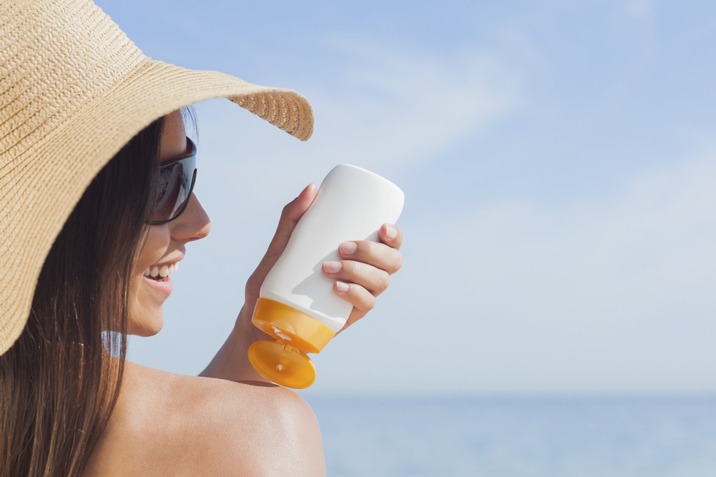With so many sunscreen products on the market, it can be difficult to distinguish the difference between them. Not only do sunscreens vary widely in protection level, but also in ingredients, texture, and stability. This article aims to demystify sunscreens so you can understand the different products on the market and find the best one to suit your needs.

What is sunscreen?
Sunscreen (also known as sun screen, sunblock, suntan lotion, or sun cream) is a lotion, spray or gel that combines several ingredients that help prevent the sun’s ultraviolet (UV) radiation from reaching the skin and causing sunburn. Two types of ultraviolet radiation, UVA and UVB, can cause skin damage and increase the risk of skin cancer. Sunscreens differ in their ability to protect against UVA and UVB.
What are UVA and UVB?
The sun emits visible light you can see, infrared light you can feel as heat, and invisible ultraviolet (UV) radiation. Ultraviolet A (UVA) is the longer wave UV ray that penetrates deep into the skin and can cause skin damage, skin ageing, and skin cancer. Ultraviolet B (UVB) is the shorter wave UV ray that mainly affects the outer layers of the skin and can cause sunburns, skin damage, and skin cancer.
What is SPF?
SPF stands for Sun Protection Factor. SPF is a measure of a sunscreen’s ability to prevent UVB rays from damaging the skin. For example, if it takes 20 minutes for your unprotected skin to start burning, using an SPF 15 sunscreen would theoretically prevent burning 15 times longer (about 5 hours).
Here’s a look at SPF in terms of percentages: SPF 15 filters out approximately 93 percent of all incoming UVB rays, SPF 30 filters out 97 percent, and SPF 50 filters out 98 percent. Though the differences are small, those who are light-sensitive or have a history of skin cancer will benefit from using sunscreens with a higher SPF.
It is important to note that no sunscreen can block all UV rays. Furthermore, no sunscreen (regardless of SPF number) should be expected to stay effective longer than 2 hours without reapplication. The telltale reddening/burning of the skin is only a reaction to UVB rays and does not indicate possible UVA damage.
What is broad-spectrum sunscreen?
Sunscreens labelled as ‘broad spectrum’ or ‘full spectrum’ are designed to protect the skin from both UVA and UVB rays. Conventional sunscreens only protect against UVB rays.
How much sunscreen should I use?
To receive the full SPF of a sunscreen, you need to apply 1 oz (about a shot glass full) to the entire body. Most people only apply a quarter to half of that amount, which means they are not receiving the full SPF advertised. Sunscreen should also be reapplied immediately after swimming, toweling off or sweating heavily.
What is the difference between chemical and mineral sunscreen?
There are two main types of sunscreen – chemical and mineral (also called physical). Chemical sunscreens use chemical UV filters, while mineral/physical sunscreens use physical UV filters.
The differences between chemical and mineral sunscreens are explained in the comparison chart below:
Chemical vs. Mineral Sunscreen Comparison Chart
| Chemical Sunscreens | Mineral/Physical Sunscreens | ||
| Other Names | Organic sunscreens | Inorganic sunscreens | |
| How they Work | Absorb (or scatter) sun rays in a chemical reaction that dissipates the heat back off the skin. | Deflect or block sun rays like a mirror to protect exposed skin. | |
| UV Filters (active ingredients that offer sun protection) | Use a combination of two to six of the following active ingredients:
|
|
|
| Stability | Mostly photostable. Avobenzone is unstable, but can be stabilized when combined with other chemical UV filters. | Generally photostable. Mineral active ingredients do not break down as easily in the sun and therefore offer greater sun protection for longer. | |
| Skin reaction | Tend to irritate skin. Some fragrance or preservatives may cause allergic reactions. | Tend to be better tolerated by most skin types. However, titanium dioxide can irritate skin. (Those who break out from mineral makeup and mineral sunscreen may be sensitive to titanium dioxide.)
Zinc oxide is generally safe. It can be used on delicate skin. |
|
| Protection | Chemical filters offer more coverage against UVA and UVB rays than mineral sunscreens. The range of protection will depend on the particular filters and their stability. (For example, avobenzone protects against the full spectrum of UVA rays.)
Must be applied at least 20 minutes prior to sun exposure for effective sun protection. |
Titanium dioxide protects against UVB rays, but does not protect against the full spectrum of UVA rays.
Zinc oxide protects against the entire spectrum of UVB and UVA rays. |
|
| Texture |
|
|
|
| Safety |
|
|
|
| Pros |
|
|
|
| Cons |
|
|
|
| Conclusion | As both chemical and mineral sunscreens each have their own advantages, many sunscreens contain both chemical and mineral UV filters. | ||
While wearing a chemical, mineral or combination sunscreen will help protect you against harmful UV rays, it is important to adopt sun safety practices year-round: stay in the shade during peak sun hours, wear a hat, protective clothing and sunglasses outside, and reapply a broad-spectrum sunscreen regularly even on cloudy days to protect yourself from the sun.
References

